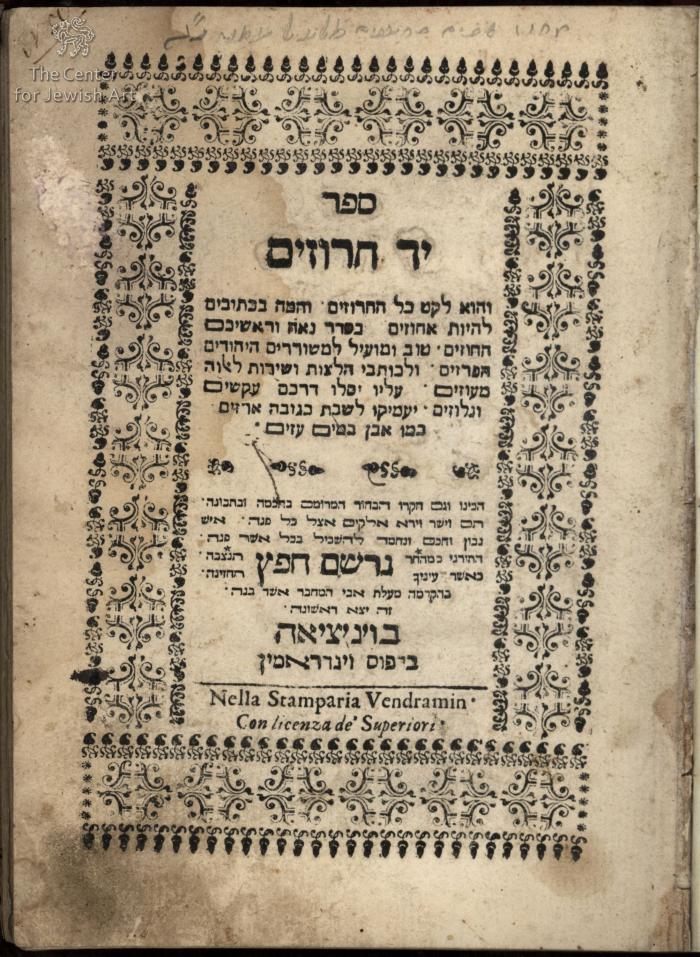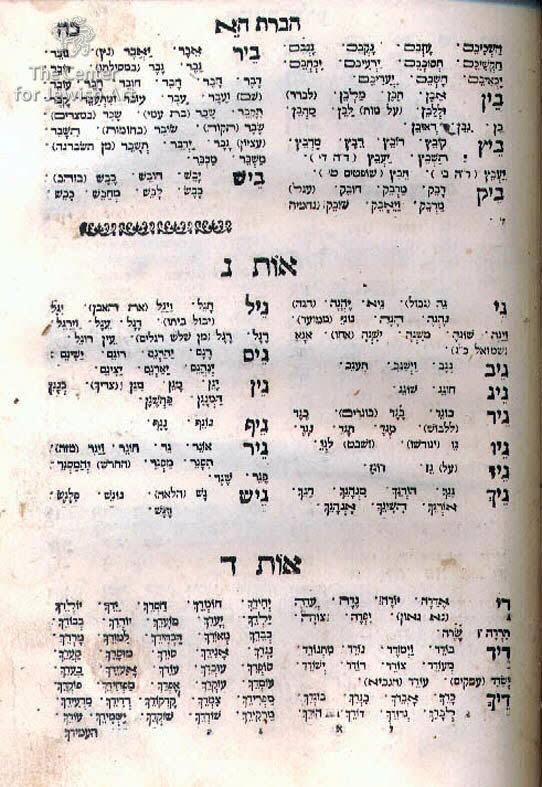Obj. ID: 37342 Yad Charuzim, Venice, 1700

sub-set tree:
This text was prepared by William Gross:
Italian Jewry had a particular fondness for the composition of Hebrew poems and texts The inspiration for the writing or printing of such texts was to honor or commemoration many different events in Jewish life. The result is a large number of single manuscript or printed pages, often with decorative elements as well as text. This extensive use of the Hebrew language in such creative ways is a marked charactaristic of Italian Jewry between the 16th and 19th centuries.
The extensive composition of Hebrew poems demanded an immense knowledge of rhyming words. To supply that need there grew a literature of lists of rhyming words. Rabbi Gershom Chefetz codified these lists and published in 1700 a book of these words according to the Aleph-Bet. Looking at this book makes the quantity of these poems much more understandable.
The Vendramin Hebrew press was established in 1630 by Giovanni Vendramin, who thereby broke the monopoly enjoyed by the Bragadin family in Venice. The press eventually joined with that of Bragadin, however, and the combined presses continue to operate well into the 18th C.
Compiler: Gershom Chefetz






